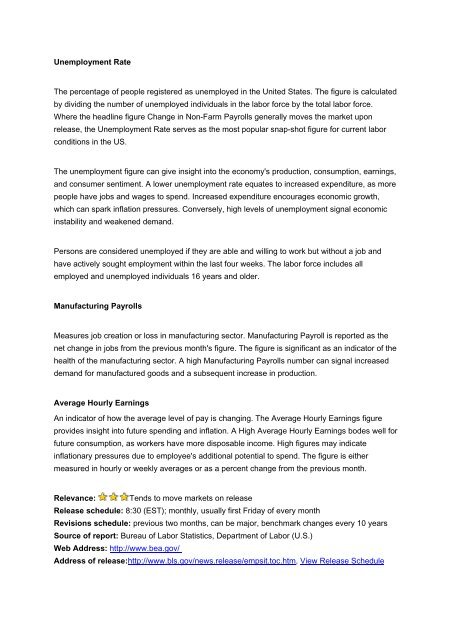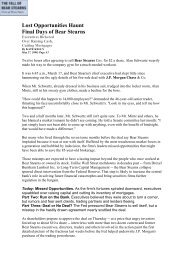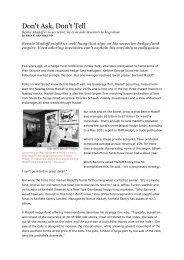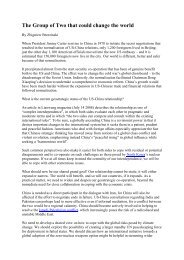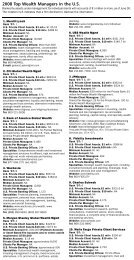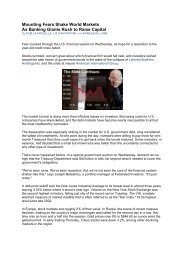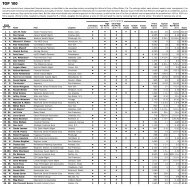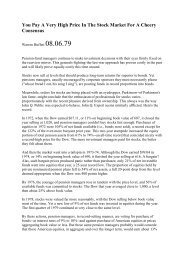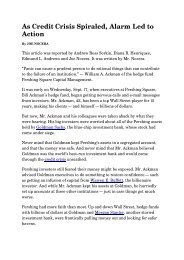PCE Deflator, (Personal Consumption Expenditure ... - Morningbull
PCE Deflator, (Personal Consumption Expenditure ... - Morningbull
PCE Deflator, (Personal Consumption Expenditure ... - Morningbull
You also want an ePaper? Increase the reach of your titles
YUMPU automatically turns print PDFs into web optimized ePapers that Google loves.
Unemployment Rate<br />
The percentage of people registered as unemployed in the United States. The figure is calculated<br />
by dividing the number of unemployed individuals in the labor force by the total labor force.<br />
Where the headline figure Change in Non-Farm Payrolls generally moves the market upon<br />
release, the Unemployment Rate serves as the most popular snap-shot figure for current labor<br />
conditions in the US.<br />
The unemployment figure can give insight into the economy's production, consumption, earnings,<br />
and consumer sentiment. A lower unemployment rate equates to increased expenditure, as more<br />
people have jobs and wages to spend. Increased expenditure encourages economic growth,<br />
which can spark inflation pressures. Conversely, high levels of unemployment signal economic<br />
instability and weakened demand.<br />
Persons are considered unemployed if they are able and willing to work but without a job and<br />
have actively sought employment within the last four weeks. The labor force includes all<br />
employed and unemployed individuals 16 years and older.<br />
Manufacturing Payrolls<br />
Measures job creation or loss in manufacturing sector. Manufacturing Payroll is reported as the<br />
net change in jobs from the previous month's figure. The figure is significant as an indicator of the<br />
health of the manufacturing sector. A high Manufacturing Payrolls number can signal increased<br />
demand for manufactured goods and a subsequent increase in production.<br />
Average Hourly Earnings<br />
An indicator of how the average level of pay is changing. The Average Hourly Earnings figure<br />
provides insight into future spending and inflation. A High Average Hourly Earnings bodes well for<br />
future consumption, as workers have more disposable income. High figures may indicate<br />
inflationary pressures due to employee's additional potential to spend. The figure is either<br />
measured in hourly or weekly averages or as a percent change from the previous month.<br />
Relevance: Tends to move markets on release<br />
Release schedule: 8:30 (EST); monthly, usually first Friday of every month<br />
Revisions schedule: previous two months, can be major, benchmark changes every 10 years<br />
Source of report: Bureau of Labor Statistics, Department of Labor (U.S.)<br />
Web Address: http://www.bea.gov/<br />
Address of release:http://www.bls.gov/news.release/empsit.toc.htm, View Release Schedule


